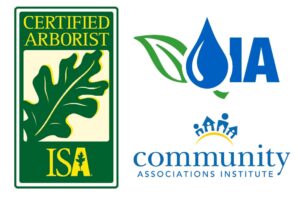Plant for the Long Term- OC VIEW January / February 2018
PLANT FOR THE LONG TERM
Hall of Fame Dallas Cowboys quarterback Roger Staubach said, I have a lot to learn about NASCAR. But I’ve learned if you have the right people in the right places doing the right things, you can be successful at whatever you do. The same can be said about landscape. If the right plants are planted in the right area with the right amount of water then success is inevitable.
There are several factors to consider when “reskinning” your community landscape. First and foremost, assess the irrigation system for breaks, spacing, efficiencies and opportunities. The irrigation system will be key in setting future planting up for success. Future water savings may pay for the renovation in less than 5 years!
Secondly, plant choice is critical for both form and function. We often plant for form but don’t consider the long-term functionality of the chosen material. Function should be considered priority followed closely by form. You may have noticed landscape line items rising at an alarming rate. Here’s why- water rates have doubled, materials have increased 25-50%, the affordable care materialized, cost of living expenses continue to climb and most recently minimum wage hikes have gone into effect. In 2020, a landscape laborer will cost the average consumer upwards of $55,000 per year. In contrast, the same service cost consumers 10-15 thousand dollars less 5 years ago. This increase in labor cost must be considered when it comes to plant choice. Plant growth rates drive labor and if plants are chosen soley on the color of the flower one may be setting the community up for significant increases down the road.
Thirdly, plant sizing is one of the most overlooked opportunities in the industry. Larger plants have larger price tags. Many studies have been done regarding plant performance based on initial planting size. In many cases, a smaller gallon size plant will outperform a 5 or 15 gallon plant over time. This is often the case with trees as well. The smaller unit sizes will reflect better long-term performance for less money up front.
Lastly, spacing a plant appropriately allows for the material to reach maturity without much maintenance. Proper placement will look sparse at first. Our eyes have been conditioned over time to desire instant gratification. However, this sparse look will soon establish and heavily reduce the need for constant thinning, shaping and labor.
Plant type, placement, sizing and spacing done right will create an efficient landscape that stabilizes cost over time while adding beauty and value to your community.
Matt Davenport

